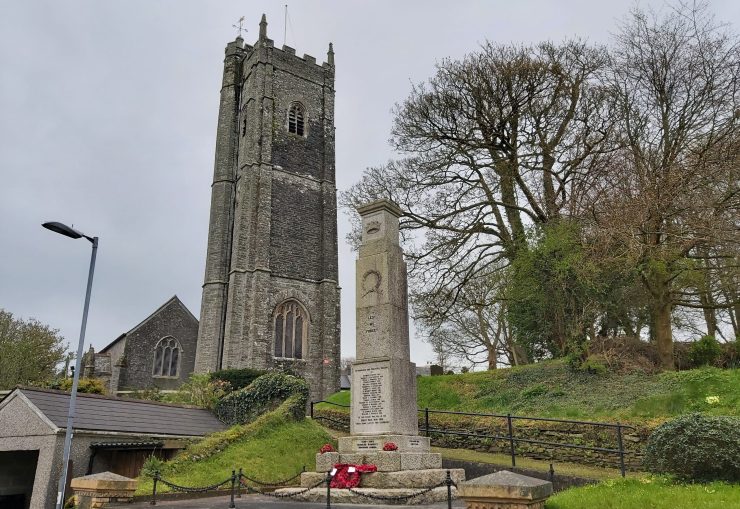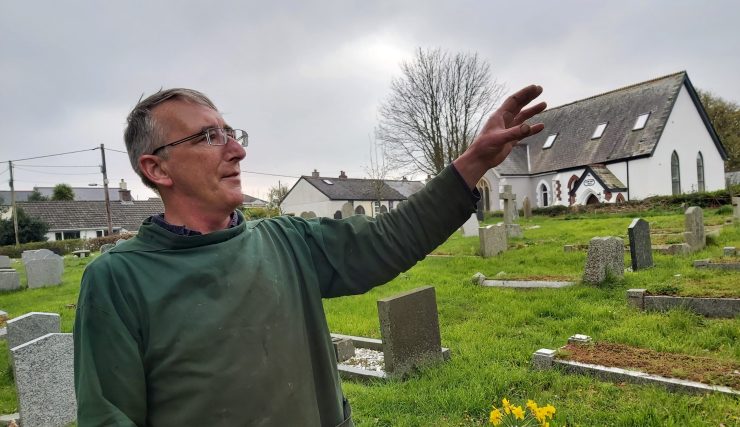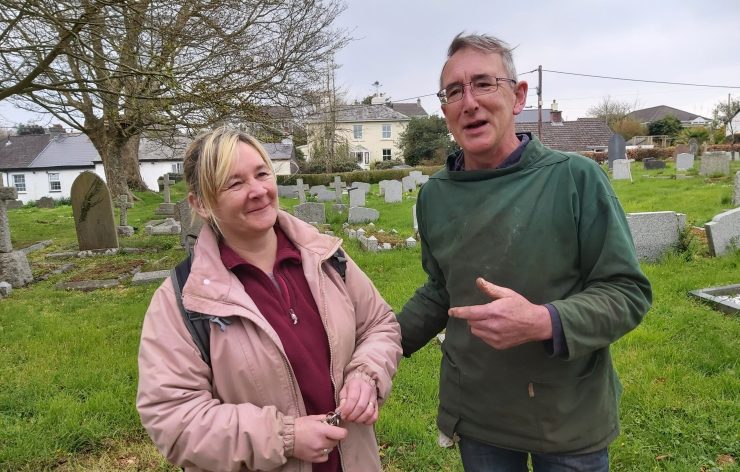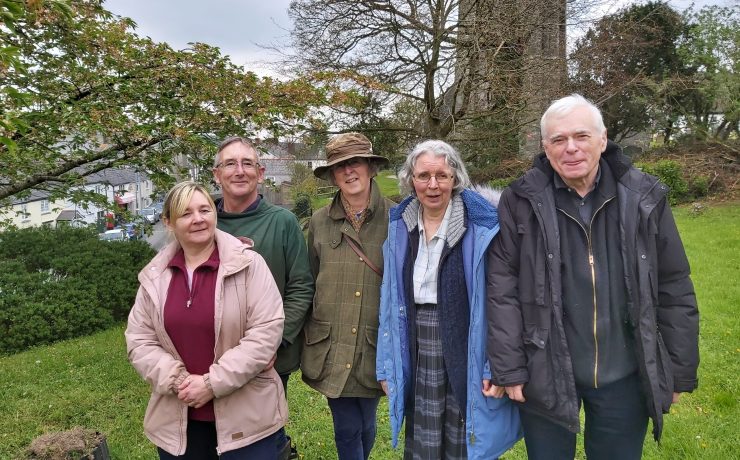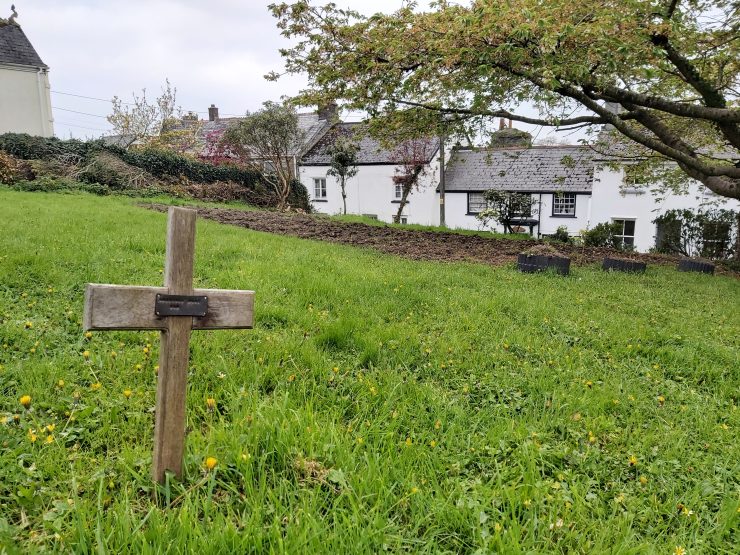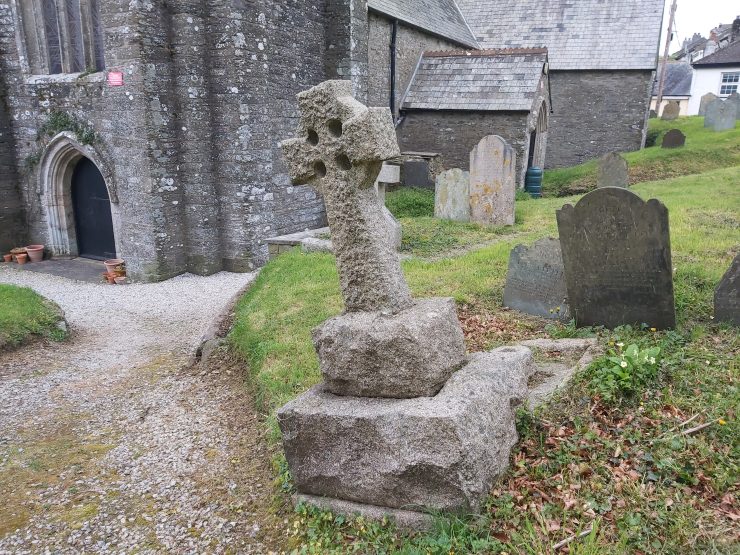The green shoots of growth
“When we all got involved about five years ago, we tried to take it out of the doldrums.”
Simon Norris is one of a team of volunteers who’ve been going to great efforts to revitalise St Michael’s churchyard in the east Cornwall village of Landrake.
Today, this once neglected plot provides a home for hedgehogs, slow worms and the occasional smooth snake. It attracts nuthatches, treecreepers, mistle thrushes, song thrushes, blue tits, robins and finches. You can see four different species of bat there – including even, if you’re lucky, the greater horseshoe bat.
“This,” says Simon, looking across these lovingly tended grounds, “this is my church here – here in nature.”
Each summer they hold special fairs in the churchyard to introduce village families to the wonders of the abundant wildlife on their doorsteps. Simon even dissects owl pellets to enlighten, entertain and enthral the visiting children and parents alike.
He’s now working on growing a small wildflower meadow in the church grounds. Earlier this month, the news that church volunteers were developing a vegetable plot in an unused corner of the churchyard garnered regional and national media attention. The story first broke in the Cornish Times and has since drawn the interest of the BBC, ITN and even the Daily Express.
“The press coverage has been so positive,” says Simon. “It’s brought the church right back into the community. The positivity of the village is absolutely stunning. People stop us in the street and say it’s a brilliant idea. It’s restored people’s faith.”
Simon’s wife Caroline is a member of the Parochial Church Council. She’s clearly very moved by the village’s response to their work. Local people even come up to the church to contribute their waste vegetables to the compost bins.
“The general support that’s given to everything the church does is incredible,” she says.
They’ve recently received donations of plant pots, seed trays, seeds, cloches and even greenhouses. Yes, greenhouses. Lots of greenhouses.
“I’d bought Simon a little pop-up greenhouse for his birthday last month,” Caroline explains. “Then our churchwarden Ian gave us his greenhouse. That was the second one. Then the lady in the house behind us said she’d got a greenhouse for Simon. We were given yet another greenhouse only yesterday. Our courtyard is now just greenhouses. There’s not even space for a washing line.”
Ian Whittaker and his wife Carolyn serve together as churchwardens for St Michael’s.
“There’s a community spirit in little villages that’s maybe stronger than in towns,” says Ian.
“People really want to support this,” Carolyn adds.
They already have herbs, raspberries and pear and apple trees growing in the churchyard.
Their new vegetable plot, located in an area of previously unused land, is set to include courgettes, spinach, spring onions, cabbages and kale.
They’re expecting their first crop of beetroot, radishes and mixed salad leaves in June.
The seedlings are now growing in their greenhouses, and in a few of their neighbours’ greenhouses.
The idea of growing their own fresh produce had been around for a while. Then the current cost-of-living crisis accelerated their plans to develop this extra form of support for their village. It’s one of several ways that they’ve been helping to provide food for their community.
For years, they’ve been given permission to glean unwanted potatoes and cauliflowers from nearby farms.
“We also snaffle up each year’s harvest festival gifts to distribute to families in the village,” says Ian.
The volunteers at St Michael’s Church run their own unofficial foodbank to support local people in need.
They’ve created their own Christmas cards and run quiz nights to help raise awareness and much-needed funds.
In addition, they contribute food to a community lunch that takes place in Landrake each month. Those gatherings themselves generate funds, and at the end of the year any surplus is donated to local charities.
For the last four years, Caroline has been organising and doing the cooking for those community lunches.
“I wear too many hats,” she laughs.
The Landrake initiative puts a commitment to sustainability and community at the heart of everything it does. It’s one of a growing number of projects across the Diocese of Truro by which volunteers have been using church land, with the goodwill and support of local people, to produce healthy, natural food to help sustain their communities. Strategies developed in parishes from all corners of the diocese – from Landrake in the east to Mylor and St Gluvias in the west – are now being shared across the county.
“It’s nice to know that we’re sharing ideas between our churches,” says Caroline.
“And that people are benefitting from them,” adds her fellow volunteer Dona Cooper.
“What better way is there to show Christ’s love than by reaching out to people and trying to give them what they need?” asks Carolyn. “Our mission statement is to be a visible Christian presence both in the village and for the village. It’s what the church is about. It’s got to be here for everyone.”
“The church belongs to all the village,” agrees Caroline.
Ian stresses that the church should be working at the heart of its community to support local people. “It’s what the church has been doing for a thousand years.”
“A churchyard isn’t a place of death, it’s a place of life,” says the Reverend Richard Magrath, the vicar at Landrake.
Richard is a relative newcomer to the parish and a passionate supporter of the churchyard initiative. He’s described by members of his congregation as “amazing” and “a breath of fresh air”.
“This is a symbol of God’s good creation, through which we show our love for our village neighbours,” Richard says.
The Landrake team’s efforts strongly reflect the Diocese of Truro’s social and environmental commitments and concerns. They’ve collaborated with local farmers to support the introduction of more environmentally friendly agricultural practices. They even encourage local people to produce their own natural fertilisers.
Simon explains that the churchyard provides all they need. “Just fill an old watering can with water and stinging nettles, and leave it for a week. That’s the finest plant food you can ever get.
“And if kids want to come up and have a munch on our salad leaves, then so much the better! And if they go home and ask their mums if they can try growing some in a window box, then we’ve really achieved something.”
And, as churchwarden Carolyn points out, with the expertise, energy and enthusiasm of green-fingered Simon inspiring the churchyard team, they can be sure of a bountiful harvest this year.
